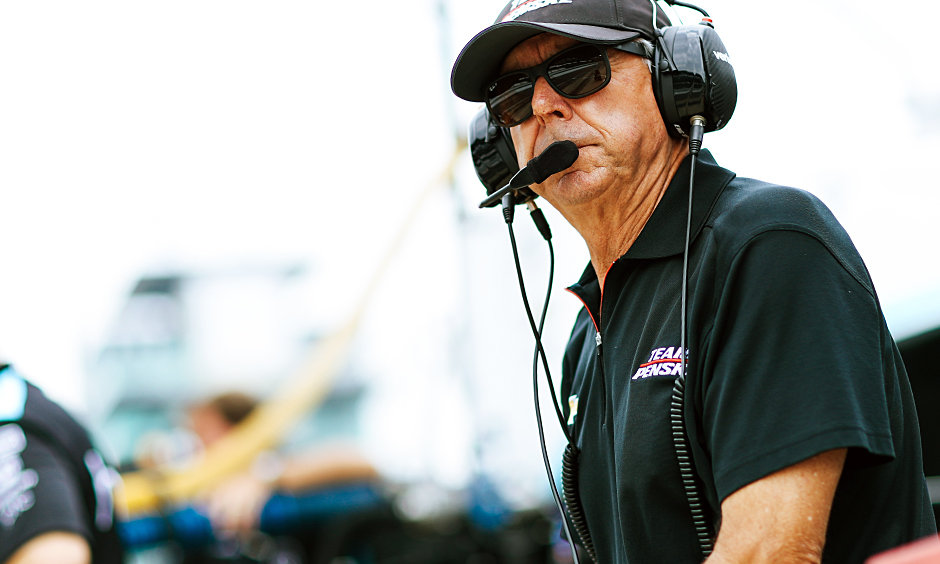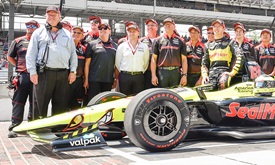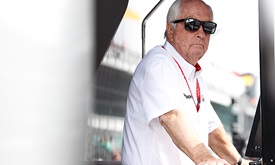Indy 500 legend Mears' advice? Rely on your skills, not your spotter
MAY 27, 2018
Want to see a young racer’s jaw drop? Just have Rick Mears explain what it was like to dive into Turn 1 at Indianapolis Motor Speedway at 225 mph without the assist of a spotter to get him through traffic.
“I never had one,” Mears said. “When I tell young drivers that, they will say, ‘You what? Oh my God, how did you do that?!’”
And then, the man who won four Indianapolis 500s, 29 Indy car races and three championships will turn that moment of disbelief into one of the most valuable teaching sessions of a fledgling driver’s career.
Don’t depend solely on the voice in your ear to make critical moves during a race, Mears will say. Sharpen your own instincts and trust them, not the person high above the racetrack who may not have the best angle to see if the lane inside or outside your car truly is clear.
That’s the message Mears, longtime Team Penske driving coach and spotter in today’s 102nd Indianapolis 500 presented by PennGrade Motor Oil for Helio Castroneves, has emphasized since he retired from the cockpit in 1992. Among his duties, he worked several years in the early 2000s as a driver coach in Indy Lights, the top level of the Mazda Road to Indy development ladder.
“I would tell them, ‘If you’re doing your job, you don’t need a spotter,’” Mears said. “You’ll be able to make moves and get into areas that you would miss out on if you wait on your spotter. If you know what you’re doing at all times – which you’re supposed to because that’s your job – you don’t really need a spotter. He’s a backup. Your performance will be better off that way.”
Veteran Verizon IndyCar Series driver JR Hildebrand remembers those talks well from his time as an Indy Lights driver.
“He told me, ‘You’ve got to rely less on those guys,’” said Hildebrand, the 2009 Indy Lights champion. “I must have told him, ‘Yeah, you’re right,’ because he didn’t say anything else. You look back at the battles between Rick and Michael Andretti, guys diving down to the apron in Turn 1 (in the 1991 race that Mears won), it’s pretty crazy to think they were doing it without spotters. You had to have a lot of trust in your fellow competitor and really be able to use your mirrors. It’s cool to think about that, and how it was a totally different dynamic in the race.”
Mears delivered a few reality checks during his time as Indy Lights driver coach, especially preaching that a dangerous move is rarely worth the risk early in a race. That was a hallmark of his career; he wasn’t so concerned with trying a bold pass in the first corner of the first lap as he was with putting himself in position to win in the final laps.
“Racing in the desert taught me that,” said Mears, who was weaned on off-road racing before turning to Indy cars. “In the desert you’ve got an 800-mile lap, and there’s only one way to win that thing – to figure out a pace that’s fast enough to win but slow enough to finish. I always thought that was what you do and I didn’t realize for quite a while how many drivers didn’t do it.”
Mears often tells young drivers about his fourth Indy 500 victory in 1991 as an example of when to take a risk and when not to. He made a bold outside pass around Andretti to take the lead in Turn 1 with 12 laps remaining, driving harder into that corner than at any other time in the race.
“Ten laps into the race, I’d never even dream of doing that,” Mears said. “Why would I take a risk to pass somebody who may not even be around at the end? They might cut a tire, blow a motor, have a bad pit stop and not even be there at the end of the day. Now, 10 laps from the end? Yeah, that’s when you do it.”
Working these days with Team Penske’s veteran drivers – Castroneves, Josef Newgarden, Simon Pagenaud and Will Power – there’s little need for Mears to break down his lessons to the basic elements like he did with youngsters. He also has stepped away from the spotter’s role with Castroneves moving to Team Penske’s sports car program this year, although the two are back together this month for the INDYCAR Grand Prix and today’s Indy 500.
“I miss (spotting), but slowing things down a little bit doesn’t hurt,” Mears said, whose role as the team’s driving coach has evolved over the years. “These days, with the engineering staff and all the telemetry and readout stuff, there’s not as much left for the eye to see what’s going on and give input that way. You can see it all on the charts and compare notes with your teammates. But I can go out, watch our guys run and look at where other guys might be running, see if they’re running a little different pattern than we are and whether it might be a gain for us.”
His dream scenario is for Castroneves to win the 500 and join the four-time-winners’ club with A.J. Foyt, Al Unser and, of course, Mears.
“I can’t wait,” Mears said. “Helio is so upbeat and he’s so great for the team. It would be incredible if we can get that fourth win.”
Live coverage of the 102nd Indianapolis 500 commences at 11 a.m. ET on ABC and the Advance Auto Parts INDYCAR Radio Network.



















